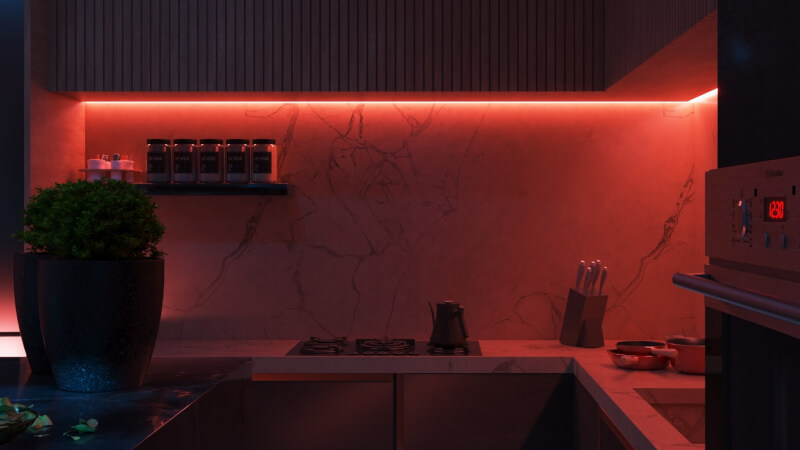Kitchen lighting
The variety of tasks carried out in a kitchen make this room one of the most frequented in our house and, in many cases, the place where the family socialises.

Table of contents
The variety of tasks carried out in a kitchen make this room one of the most frequented in our house and, in many cases, the place where the family socialises.
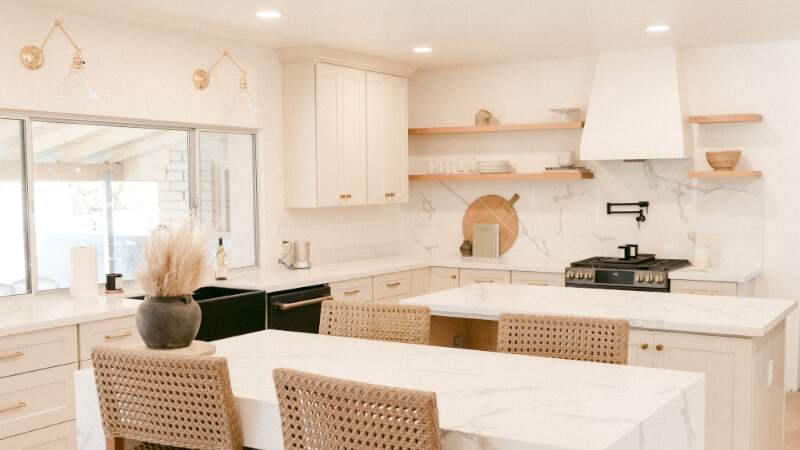
Types of lighting
Because it is such a multi-purpose space, the kitchen should have various types of lighting, each with its own function. We can divide kitchen lighting into three types:
General lighting — Ambient lighting for circulation and dining areas.
Functional lighting — Lighting for work surfaces such as worktops and cookers. Good lighting on these surfaces contributes not only to a good view of the food, but above all to greater safety when handling potentially dangerous objects and tools.
Decorative lighting — To highlight certain areas or objects in the kitchen, this type of lighting is often used in open-space contexts, where the kitchen and living room are integrated.
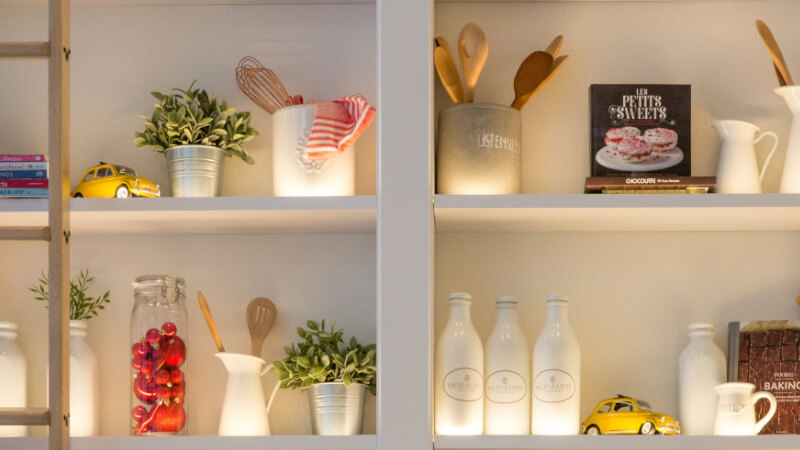
Kitchen luminaires
Ceiling luminaires with a high field angle contribute to the uniformity of general lighting. Downlights are the most common and economical type of luminaire. For more modern-style kitchens, recessed or suspended linear fixtures are an excellent solution.
The colour temperature for general lighting varies mainly according to personal taste, with the most common being between 2700K and 4000K.
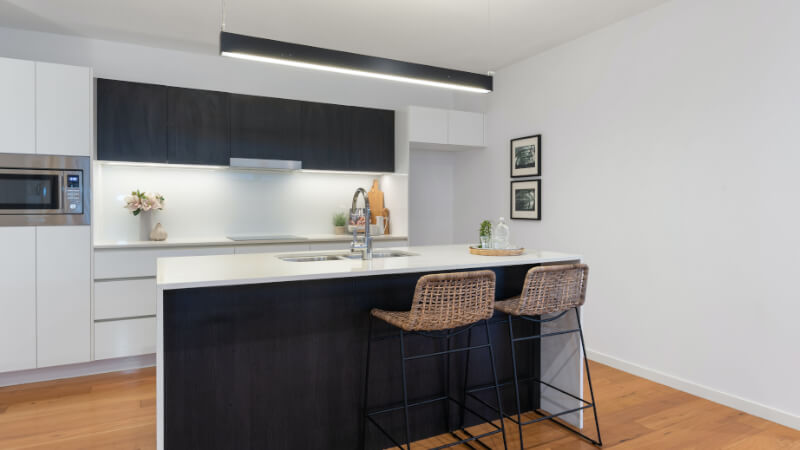
Work areas benefit from a colour temperature between 4000K and 5000K, and a higher CRI of at least >80. A high CRI value makes it possible to see colours well and a neutral/cool colour temperature enhances attention.
When lighting worktops, the luminaire is usually placed at the base of the top piece of furniture to avoid shadows.LED bars are a good solution.
In integrated kitchens, it is important that there is no difference in lighting between rooms - using a cood colour temperature in the kitchen and a warm one in the living room does not contribute to the feeling of comfort we want in our home. In these cases, we can use CCT LED Bars which allow the colour temperature to be regulated.
Nexled's CCT LED Bar allows you to vary the colour temperature between 2700 and 5700K, as well as regulating the light intensity. So you can choose cooler, more intense lighting when you're cooking or preparing food, and warmer, less accentuated light when you want to create a cosier atmosphere.
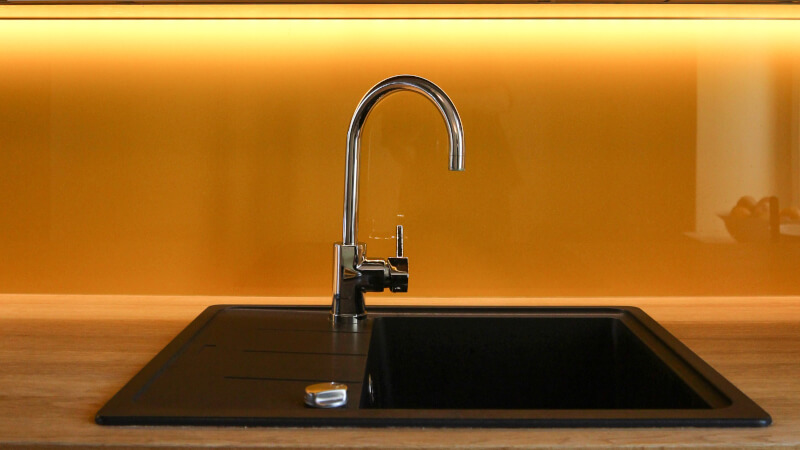
Decorative lighting allows us to be bold in our choice of solution. To highlight decorative objects in furniture, for example, we can use the aforementioned LED bars, in a warmer colour temperature, or RGB bars, which allow us to choose the colour of the lighting according to the mood we want to create.
